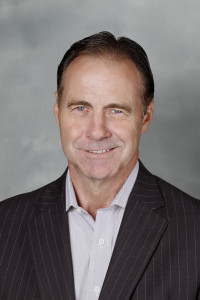Welcome to “Free-Rider Friday.” Most of our shows are “topic” driven, where we dive deep into one subject. Free-Rider Fridays are designed to be “event” driven—whatever issues are in the news that we (or you) find worthy of commentary.
In economics, free riding means reaping the benefits from the actions of others and consequently refusing to bear the full costs of those actions. This means Ed and Ron will free ride off of the news, and each other, with no advanced knowledge of the events either will bring up.
You can also comment on Twitter at #ASKTSOE.
Our New Facebook Page
Like us on Facebook.
Ed’s Topic - More on the “one-percent”
The top 1% of income earners in the USA pay nearly 40% of federal income taxes. You can see another breakdown here, based on 2012 IRS data, from the Tax Foundation.
Ron’s Topic - Net Neutrality Regulation Update
Ajit Pi (pronounced “Ah-JEET Pi”), FCC Commissioner, was interviewed in the April Rush Limbaugh Newsletter (no link available). Here’s some of what he said:
The FCC is wielding a regulatory sledgehammer to pound down a nail that simply doesn’t exist. Innovators, engineers, and technologists have decided how the Internet works—but now it’s going to be regulators, politicians, and lawyers.
He also mentioned how Netflix’s CFO said: “We didn’t really like Title II. We would have preferred a non-regulated solution.”
Allegations Netflix (1/3 of all traffic at peak) purposefully sends traffic on worse roads; refused open video standards to intentionally worsen the experience of users to gin up support for net neutrality regulation.
There’s no regulation of content contained in the 400 pages, which is good news. But Mr. Pi says it’s possible.
The “Universal Service Fee” (USF) now applies to broadband, not just voice. So expect to see this on your broadband bill.
Mr. Pi believes these regulations will help big companies at the expense of smaller ones—less competition, less choice, etc.
Ed’s Topic - AppleWatch
The Apple Watch pre-sold 2.3 million units. We discussed the blog post by pricing consultant and author Rafi Mohammed, who grades Apple an A for ambition, but a D in pricing strategy. Here's why:
Problems
Upgrades
No carrier subsidies
Price range too wide ($349 to $17,000)
Should have
Narrow price range $249-$2000
Offer a monthly payment plan
Trade-in program
Bundle watch with iPhone
It remains to be seen if the most profitable company on the planet really launched with a sub-optimal pricing strategy.
This is wonderful thing about enterprise: all value is subjective, and subject to the test of the market—that is, the preferences of individuals.
Ron’s Topic - Peter Drucker and 2020
An HBR blog post by Rick Wartzman, “What Peter Drucker Knew About 2020,” was discussed.
Here’s the article on the company that introduced a $70,000 minimum wage for its 120 employees.
Ed’s Topic - Learn Liberty and the TIP Story
Many great educational videos on economics, different schools of thought of classical liberalism, etc., at LearnLiberty.org.
Ron would also recommend Milton Friedman’s “Free to Choose” TV series, both the original 1980 series as well the updated series done in for 1990.
You can watch both for free at freetochoose.tv, along with other excellent content.
Ed also asked Ron about the TIP Clause used in some professional firms when they are delivering extraordinary value.
Here’s the story, as told in Ron’s Book, Implementing Value Pricing: A Radical Business Model for Professional Firms:
In 1997, Tim was the managing partner of top accounting firm, and his best, long-term customer (of 20 years) had come to him wanting to sell his $250 million closely held business. He told Tim (and I am paraphrasing here), “You’ve been my CPA for 20 years and I trust you with my life. It is time for me to sell my business and enjoy my golden years. Here is what I want you to do:
Update our business valuation to maximize the sales price.
Fly with me anywhere we have to go to meet with potential buyers.
Be actively involved at every stage of the sales negotiation.
Perform the due diligence, along with the attorneys, of the qualified buyers.
Work with the attorneys on the sales contract to make sure my interests are protected.
Perform tax planning and structure the deal in such a manner as to maximize my wealth retention.”
Obviously, this was a very sophisticated customer and it is true Tim had no idea, at the outset of this engagement, how long it would take to close the deal, and how much firm capacity (his and his team members) it would require. But he did know more than an average salesman would know, which is one of the enormous advantages professionals possess when it comes to pricing the customer, not the service. He knew the customer’s business was well niched, profitable, and growing. This would indicate a very high probability of success.
He also knew this customer was an audit customer of the firm’s and therefore he would not be able to charge a contingency price based upon a financial outcome (such as a percentage of the sales price, or of any tax savings), since that would impair independence, which is illegal for an auditor.
When I asked Tim how he priced this engagement, he proudly proclaimed that every hour charged to this project was at his highest consulting rate of $400 per hour, indicating, right from the start, Tim knew there was more value on this project than he would ever be able to pad on a timesheet.
He further explained how he had updated the business valuation, negotiated with two buyers, and did all of the other tasks requested by the customer. As a result of Tim’s work, the customer received (and saved in taxes) an additional $15,000,000, and acknowledged Tim was directly responsible for this outcome. In Tim’s own words, the customer was “elated.”
Tim then told how he priced the engagement. He reviewed all of the hours from the work-in-progress time and billing system, believed it did not adequately reflect the value he provided, and marked it up an additional 25 percent over the $400 hourly rate. He then sent out an invoice for $38,000, which the customer promptly—and happily—paid.
He believed he was value pricing. He was not—he was value guessing, since the customer had absolutely no input into the price up front, and only a customer can determine value.
When I asked Tim what he thought the customer would have paid if he had utilized a TIP clause (also referred to as the retrospective price, or success price), such as the following:
In the event that we are able to satisfy your needs in a timely and professional manner, you have agreed to review the situation and decide whether, in the sole discretion of XYZ [company], some additional payment to ABC [CPAs] is appropriate in view of your overall satisfaction with the services rendered by ABC.
The TIP is being based on the “overall satisfaction with the services rendered,” and not any financial contingency, which is the origin of the acronym TIP—to insure performance. This TIP clause would be discussed with the customer before any work began. If needed, you could put a minimum price on the engagement (such as $40,000) to cover immediate firm capacity.
But in this case, given the 20-year relationship with the customer, even a price solely determined by a TIP would have been acceptable, since the customer was not likely to take advantage of Tim after the services he rendered and the long-term relationship they had.
In answer to my question, Tim said his customer would most likely have paid him $500,000, a sum I believe to this day is below the real number—but at least better than the $38,000 he finally charged. Nevertheless, since Tim knows the customer better than I do, let us take his number as correct.
I informed Tim he had made the Ultimate Accounting Entry:
Debit Credit Experience $462,000 Cash $462,000
Tim was providing extraordinary value to this customer yet his cost-plus pricing theory prevented him from capturing a fair portion of it. Are we not ruled by our theories? This is why it is imperative to extinguish the cost-plus mentality from your firm.
No one in any seminar I have shared this story with believed Tim would have received less than $38,000 for his services on this engagement. In effect, Tim paid a reverse risk premium—he was assured he would not go below his hourly rate, but in return he gave up the added value the customer already believed he had created. This is not a risk worth taking if you want to maximize your firm’s profitability.
The deleterious effects of this are deeper than just being deprived the value from the work you provided on any one engagement. The problem lies at the very core of a firm’s measurement system and points out how it does not offer the opportunity to learn from lost pricing opportunities, or pricing mistakes.
In his inimitable way, Yogi Berra explains this situation with his quip, “We made too many wrong mistakes.”
When it comes to pricing, the wisdom from Yogi is profound. Tim made the wrong mistake, and here is why: He will not learn anything from it because the firm’s primary assessment is billable hours—once again the billable hour is the incorrect measuring device for value. When the partners review the realization report on this engagement, they will see 125 percent, which is excellent when you consider most firms realize between 50 and 95 percent overall on each hour.
Most likely, Tim will get nothing but accolades and praise from his fellow partners. No one will ask where the $462,000 is because the billable hour metrics do not have a way to capture that type of information, which is precisely why pricing is more of an art than a science.
This is an excellent example of a wrong mistake for another reason: Tim (or the firm) will not learn anything from this lost pricing opportunity. The $462,000 simply vanishes into thin air (or, more precisely, the consumer surplus remains on the customer’s income statement).
No knowledge was gained by the firm on how to price the next similar engagement in accordance with value—it will simply perpetuate the same mistake, over and over. Being a more accurate activity-based cost-accountant, or even excellent project manager, would also not have helped Tim to capture the value.
This is not meant to imply with value pricing you will never make mistakes. You certainly will. The difference is they will be the right mistakes, because with value pricing, as opposed to cost-plus pricing, you are forced to receive input from the customer as to your value, and have in place pricing strategies that will capture more of that value (like the TIP clause).
If you engage in After Action Reviews (AARs), which perform value assessments on each engagement, and elicit feedback from your customers, you will learn from your mistakes and become better at pricing in the future.
Most feedback firms receive on pricing is negative: “Your price was too high.” Or it is ambivalent: “Your price was just right.” No customer ever discloses how much money your firm left on the table. Since humans emerged from the cave and began to barter, it is the customer’s job to do everything in their power to push down prices. There is nothing new about this, and it should not surprise any executive. Your firm’s job, however, is to push back. The only effective way to accomplish this is by emphasizing value.
Ron was also interviewed for an article on the TIP clause, which you can read here.






















